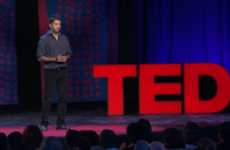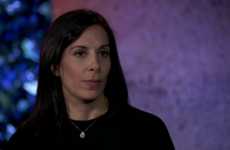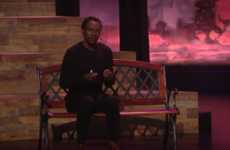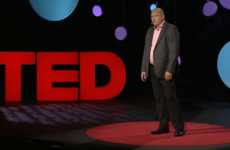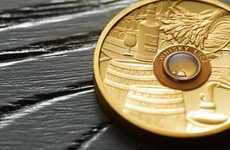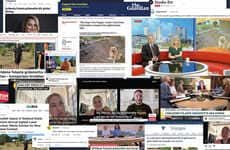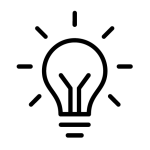
Need Inspiration?
Get inspired by 4,000+ keynote speaker videos & our founder, a top keynote speaker on innovation.
Carson Bruns' Keynote on Tattoos Boasts Possible Uses of Function-Forward Ink
Kalin Ned — May 15, 2019 — Keynote Trends
References: carsonbruns & ted
Carson Bruns is a chemist and a visual artist who delivers an insightful keynote on tattoos. The talk reveals possible uses that will benefit the human agent. The speaker directs a laboratory, where the focus is predominantly set on nanotechnology. The ideas Bruns puts forward are quite interesting and ambitious.
Tattooing is an ancient practice and soot -- "the black powdery carbon dust that gets left behind in the fireplace when you burn stuff," is commonly used. The pigment particles get trapped in the dermis, presenting an aesthetically pleasing composition. In his keynote on tattoos, Bruns explores ways and proposes ideas to give a functional component for the works of art.
The speaker offers the use of microcapsules -- "a tiny hollow particle with a protective outer shell," as a method for delivery of functional particles. The first idea Carson Bruns shares is one where the ink is able to detect UV rays, signal to individuals that they need to reapply sunscreen and therefore, limit the risk of skin cancer. The second idea has ties to temperature regulation. This can be a way for people to know if they need to seek medical attention. Bruns saves his most ambitious proposition for last. The final idea is tied to allowing for electrical conductivity of the skin which will allow people to charge devices like pacemakers.
Tattooing is an ancient practice and soot -- "the black powdery carbon dust that gets left behind in the fireplace when you burn stuff," is commonly used. The pigment particles get trapped in the dermis, presenting an aesthetically pleasing composition. In his keynote on tattoos, Bruns explores ways and proposes ideas to give a functional component for the works of art.
The speaker offers the use of microcapsules -- "a tiny hollow particle with a protective outer shell," as a method for delivery of functional particles. The first idea Carson Bruns shares is one where the ink is able to detect UV rays, signal to individuals that they need to reapply sunscreen and therefore, limit the risk of skin cancer. The second idea has ties to temperature regulation. This can be a way for people to know if they need to seek medical attention. Bruns saves his most ambitious proposition for last. The final idea is tied to allowing for electrical conductivity of the skin which will allow people to charge devices like pacemakers.
6.4
Score
Popularity
Activity
Freshness


